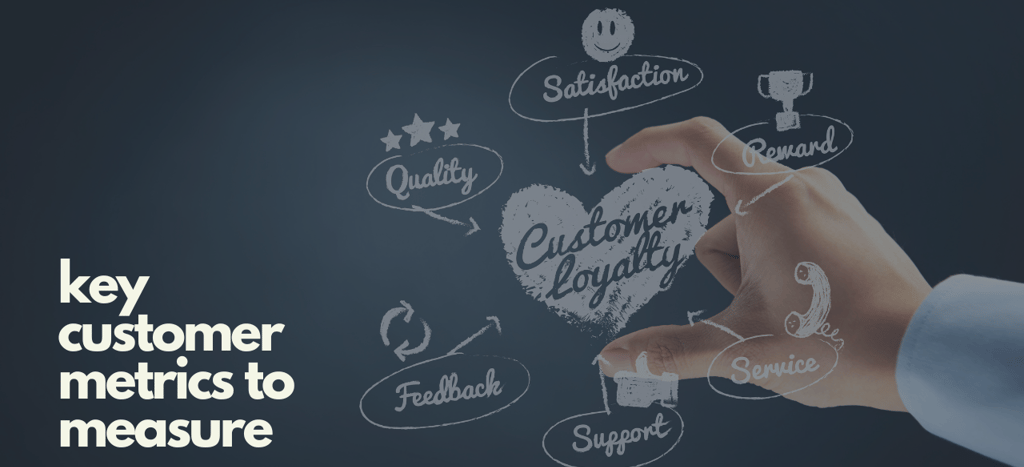Defining and Leveraging Customer Metrics to Reduce Churn
Boost customer retention and reduce churn by defining and leveraging key customer metrics. Discover which key metrics to track, how to measure them, and why they are crucial for your business success.
CUSTOMER EXPERIENCE
Joseph Loria
7/9/20243 min read


Customer metrics are the backbone of any successful retention strategy.
Providing invaluable insights into your customer relationships, allowing you to predict churn and take proactive steps to enhance retention.
But you need to take the time to define and leverage the right customer metrics. And when you do, you’ll significantly reduce churn and drive long-term growth.
Let's explore some of these key customer metrics and how to use them effectively.
What Are Customer Metrics?
Customer metrics are quantitative measures that help businesses understand and evaluate the health and performance of their customer relationships.
These metrics offer a clear view of how customers interact with your product, their satisfaction levels, and their likelihood of remaining loyal.
So, with that understanding, what customer metrics should you be tracking?
Key Customer Metrics to Track
Customer Health Score
What it is: An aggregate metric derived from various data points reflecting the overall health of your customer relationships.
How to measure: Combine metrics like product usage and financial indicators into a scoring model.
Why it's important: Real-time monitoring of health scores helps identify at-risk customers and take proactive measures to retain them.
Churn Rate
What it is: The percentage of customers who leave your service over a given period.
How to measure: (Number of Customers Lost During a Period / Number of Customers at the Start of the Period) x 100.
Why it's important: High churn rates can have significant financial impact on your revenue and growth, making it crucial to track and reduce.
Customer Retention Rate
What it is: The percentage of customers retained over a period.
How to measure: (Number of Customers at End of Period - Number of New Customers Acquired) / Number of Customers at Start of Period x 100.
Why it's important: High retention rates indicate successful customer retention strategies, contributing to long-term growth.
Time to Value (TTV)
What it is: The time it takes for a customer to realize the first measurable value from your product.
How to measure: TTV (Days) = Date of First Value - Sold Date.
Why it's important: Reducing TTV helps ensure customers quickly see the benefits of your product, increasing the likelihood of retention.
Net Revenue Retention (NRR)
What it is: The percentage of recurring revenue retained from existing customers, including upsells and cross-sells.
How to measure: (Beginning ARR - Churned ARR - Downgraded ARR + Expanded ARR) / Beginning ARR
Why it's important: High NRR indicates strong customer relationships and growth potential, highlighting the effectiveness of your retention strategies.
Gross Revenue Retention (GRR)
What it is: The percentage of recurring revenue retained from existing customers, excluding upsells and cross-sells.
How to measure: (Beginning ARR - Churned ARR - Downgraded ARR) / Beginning ARR
Why it's important: Maintaining high GRR reflects effective retention strategies and a stable customer base.
How to Implement a Customer Metrics System
When implementing a customer metrics system, there are three key steps to follow in order to effectively track and leverage those metrics:
Tools and Software Recommendations: Use CRM systems, analytics tools, and customer feedback platforms to gather and analyze data.
Setting Up Dashboards: Create real-time dashboards for easy monitoring of key metrics.
Involving Cross-Functional Teams: Ensure sales, support, and customer success teams are aligned and involved in tracking metrics.
Using Customer Metrics to Drive Action
Interpreting customer metrics is crucial for developing actionable insights. Here's how to use these metrics to drive positive outcomes:
Interpretation: Analyze trends and patterns in your metrics to identify areas needing improvement.
Develop Action Plans: Create targeted strategies to address issues, enhance customer experience, and boost retention.
Common Pitfalls to Avoid
When implementing a customer metrics system, be aware of these common pitfalls:
Over-reliance on a Single Metric: Relying too heavily on one metric can provide a skewed view of customer health.
Ignoring Qualitative Data: Combine quantitative metrics with qualitative feedback for a comprehensive understanding.
Failing to Act on Insights: Ensure that insights gained from metrics lead to actionable strategies.
Tracking and leveraging customer metrics is essential for reducing churn and driving long-term business success.
By understanding the importance of these metrics and implementing a robust tracking system, you’ll proactively address customer needs, enhance satisfaction, and build a resilient business.
